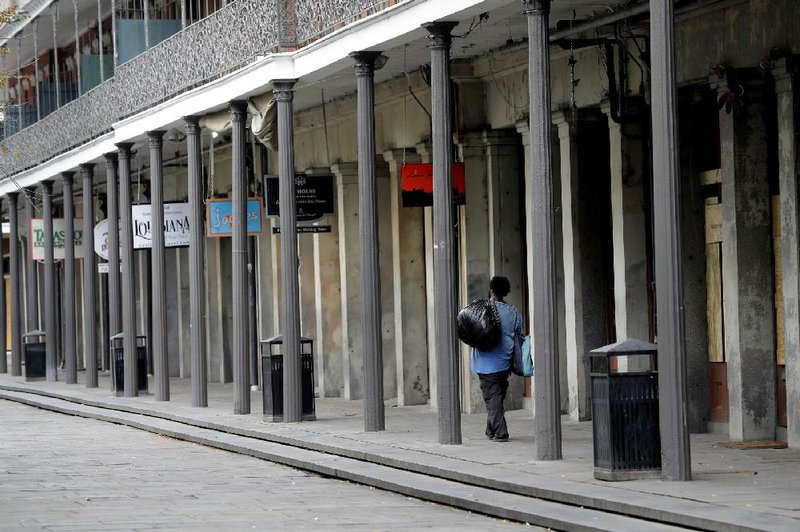NEW ORLEANS -- More than a million dancing, singing, bead-catching celebrants packed the streets of the French Quarter and other venues across this city in the weeks leading up to the sprawling open-air party that is Mardi Gras.
There was little worry during the February festivities about the new virus that had infected a few dozen people in other parts of the country. The city's top health official believed the flu "is far more dangerous right now than the coronavirus," she told the Times-Picayune/New Orleans Advocate newspaper.
Thirteen days later, on March 9, Louisiana reported its first case of covid-19. Then came another, and another. Clusters broke out in several nursing homes. The cases popping up across the state were not easily linked to one another, meaning that a community spread was already underway.
A terrible realization began to dawn on residents and political leaders: The famous bonhomie of the world's biggest free party may have helped supercharge one of the most rapid spreads of the coronavirus, which is now threatening to overwhelm Louisiana's health care system and potentially make the state one of the next epicenters.
[CORONAVIRUS: Click here for our complete coverage » arkansasonline.com/coronavirus]
"We had people from all over the world. We also had the spread of this virus, and people did not realize it was spreading," said Rebekah Gee, a former state health secretary now on the faculty of Louisiana State University's medical school. "So people not only caught beads, but they caught covid-19."
As of Friday, Louisiana had reported more than 2,700 cases and 119 deaths related to coronavirus -- with about two-thirds of the cases and deaths in the New Orleans metro area. During the first two weeks of known infections, the virus was coursing through Louisiana at an extraordinarily rapid pace, according to an analysis by Gary Wagner, a professor at the University of Louisiana at Lafayette. He found that the rate of growth in that period was the highest in the world.
"It seems the virus was there when crowds were around for Mardi Gras and it may have turned into a super-spreader event," he said. "You can see what's happening in Italy and Spain, and there is every reason to think the same events are going to happen here."
"It seemed like during our Mardi Gras week, we had at least two [infected] people coming into our population," she said. "And from there, it really spread very, very fast."
[Video not showing up above? Click here to watch » https://www.youtube.com/watch?v=fzc25cB-7ow]
There might have been other factors as well, said Joe Kanter, the state's medical director for the region that includes New Orleans. The city's robust cruise industry and many conventions and gatherings were pouring in visitors just as the coronavirus arrived.
Canceling or curtailing Mardi Gras was never considered, said New Orleans Mayor LaToya Cantrell. At that point, American life had not been seriously altered. People were still packing airports. The NBA hadn't suspended games and Disney World was still open for business.
Cantrell said the city works closely with the U.S. Department of Homeland Security and the FBI to keep Mardi Gras celebrations safe from terrorist attacks, and those federal agencies never raised coronavirus as a concern.
"We were not given a warning or even told, 'Look, you know what? Don't have Mardi Gras,'" she said.
Information for this article was contributed by Amy Brittain and Brittney Martin of The Washington Post.
A Section on 03/28/2020
